Understanding Red Striae on the Back of the Legs
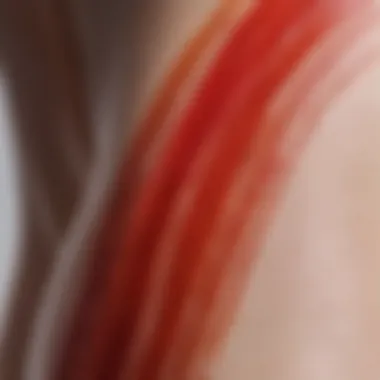
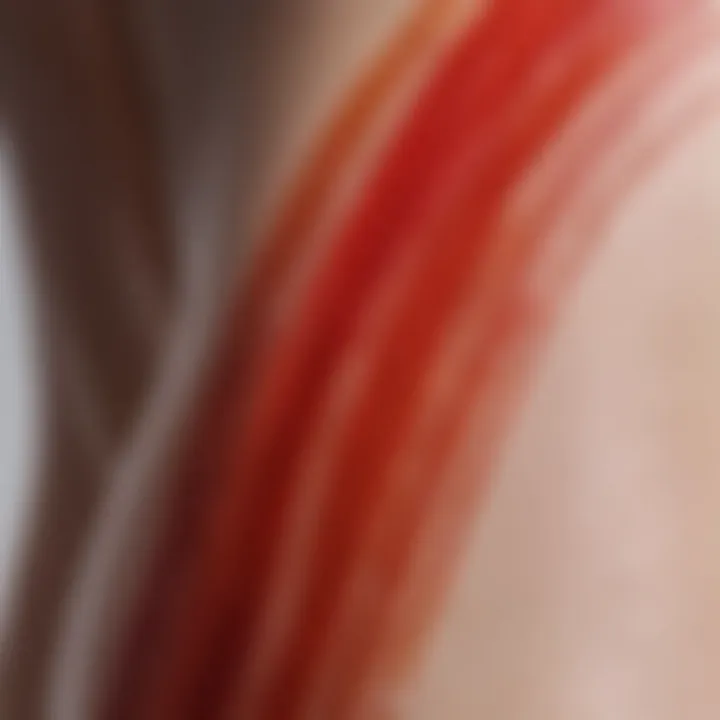
Intro
Red striae, often referred to as stretch marks, on the back of the legs are a topic that often slips under the radar for many. Yet understanding these marks is crucial for both cosmetic and health reasons. Stretch marks can impact anyone, regardless of age, gender, or body type. While they may simply appear as a cosmetic concern, their presence can signal deeper issues in terms of skin health and body changes.
Causes of Red Striae
The primary cause of red striae is rapid stretching of the skin. This can happen during various life stages such as:
- Pregnancy: As the body grows to accommodate a developing child, the skin expands significantly.
- Puberty: Sudden growth spurts in teenagers can lead to the appearance of these marks.
- Weight fluctuations: Gaining or losing weight quickly can stretch the skin, resulting in striae.
Understanding the triggers for these red lines is an important first step in addressing any concerns.
Ürün İncelemesi
Ürün Tanıtımı
When it comes to managing red striae, numerous products promise relief, but selecting the right one can be a bit like finding a needle in a haystack. Some options focus on moisturizing and improving skin elasticity, while others claim to minimize the appearance of existing striae. It’s essential to research fully before investing your time and money into these products.
Ürün Özellikleri
- Moisturizers: Look for those enriched with cocoa butter, shea butter, or vitamin E. These ingredients help keep the skin hydrated and may improve elasticity over time.
- Topical treatments: Creams that contain retinoids can promote skin renewal but consult a healthcare provider before using.
- Oil blends: Some users find relief with oils like almond oil or argan oil that nourish and repair skin.
Despite their potential effectiveness, remember that results may vary from person to person. No miracle product exists that guarantees total eradication of red striae.
Güzellik İpuçları
Doğal Güzellik Yöntemleri
For those who prefer a natural approach, several home remedies are suggested:
- Aloe vera: Known for its healing properties, applying aloe vera gel can soothe the skin.
- Coconut oil: Regular massages with coconut oil may support skin health.
- Lemon juice: Its natural acidity can help lighten striae when used consistently.
Sağlıklı Beslenme ve Güzellik
A balanced diet plays an unseen role in skin health. Foods rich in vitamins A, C, and E, alongside omega-3 fatty acids, can promote skin elasticity and overall glow. Examples include:
- Fruits (especially berries and citrus)
- Leafy greens (like spinach and kale)
- Fatty fish (for omega-3)
Incorporating these foods into your meals could also serve as a preventive measure to stave off the formation of new striae.
"Prevention is often less costly than treatment. A healthy lifestyle can go a long way."
Finale
In sum, red striae on the back of the legs are a common skin condition, yet deserving of understanding and attention. The combination of targeted products and natural remedies, combined with a focus on nutrition, can help manage their appearance. Staying informed about your skin can empower you with the knowledge to tackle these marks head-on.
Prelims to Red Striae
The appearance of red striae on the back of the legs can trigger various reactions, ranging from concern to curiosity. Understanding red striae is quite crucial as it encompasses not just the aesthetic impact but also underlying physiological changes that might be taking place in someone’s body. These marks highlight changes that can happen due to factors like growth spurts, weight fluctuations, or hormonal shifts. Addressing this awareness is vital in education about skin health, self-image, and personal care.
Definition of Striae
Striae, colloquially known as stretch marks, are essentially scars that develop when the skin is stretched rapidly. They appear initially as red or purple lines on the skin, which eventually fade to a lighter hue. Scientifically, striae are formed due to tearing of the dermis, the second layer of skin. This tearing can happen in response to quick changes in body size or shape, like during pregnancy, puberty, or significant weight gain or loss.
For many individuals, the emergence of striae can be unsettling. Understanding that they are not just a cosmetic issue but a reflection of the body’s changes helps to foster a more supportive dialogue around them.
Common Locations of Striae
While these striae can pop up in various parts of the body, they are most frequently located on areas such as the abdomen, thighs, and importantly, the back of the legs. Some factors that predispose these areas to striae include:
- Rapid Growth: During adolescence, the body grows quickly and often results in stretch marks on the back of the legs.
- Weight Changes: Those who experience significant weight gain or loss may see these marks develop in this area due to the skin adapting to the changing fat distribution.
- Physical Activity: Athletes may also notice striae, particularly if they are building muscle mass rapidly.
Furthermore, while the physical location warrants attention, the social and emotional implications of having visible striae cannot be overlooked. The feelings tied to skin aesthetics can weigh heavily on self-esteem, making it essential to address these experiences with care and consideration.
Prevalence of Red Striae
Understanding the prevalence of red striae adds an important layer to our overall comprehension of this common skin condition. While striae are often viewed as mere cosmetic concerns, their appearance can signify underlying physiological or lifestyle changes that affect numerous individuals. Knowing how widespread these marks are can help reduce stigma and promote a healthier perception of body image, leading to better self-acceptance and informed choices regarding care.
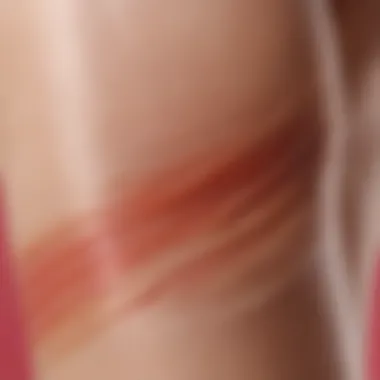
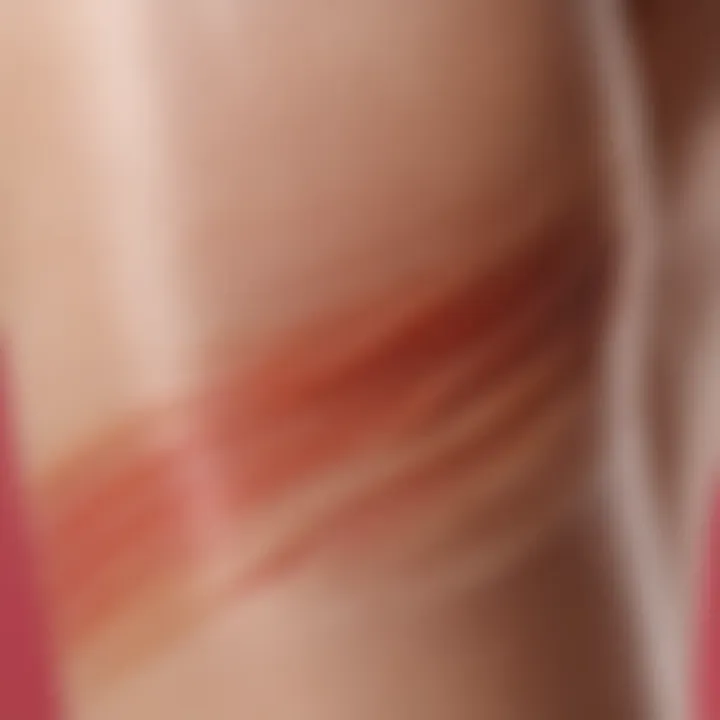
Demographics Affected
Red striae can impact individuals across various demographics. Both men and women experience these changes, although certain populations may be more susceptible due to hormonal fluctuations, genetic predispositions, or rapid growth phases. Some specific demographic factors to consider include:
- Age: Adolescents often experience striae during growth spurts, while pregnant women may notice them due to weight gain and hormonal shifts.
- Body Type: Those with higher body fat percentages may experience striae more than those with lower fat levels, yet thin individuals are not exempt from this condition either.
- Ethnic Background: Research suggests variations in prevalence based on ethnicity, possibly due to differences in skin structure and genetics.
Knowing who is mostly affected sets the stage for a deeper understanding of why these marks appear, resonating with various stages of life rather than simply being a beauty issue.
Connection to Body Changes
Red striae can appear as a direct outcome of significant body changes, revealing a physical narrative of transformation. Their connection to factors such as weight fluctuations, pregnancy, and muscle development is an essential aspect of what this article aims to explore. Here are some important connections to consider:
- Weight Gain and Loss: Rapid changes in body size can stretch the skin more than it can accommodate, leading to the formation of striae. Those on intense weight loss journeys may see them emerge as the skin struggles to retract.
- Pregnancy: As a woman's body expands to accommodate a growing fetus, the skin undergoes considerable stress, resulting in the widespread occurrence of striae. This can serve as a reminder that it is a natural part of childbearing.
- Muscle Growth: Individuals who engage in substantial physical activity resulting in muscle gain may find that the skin on their legs experiences similar stress as it stretches to adapt to a more muscular form.
Understanding these connections can foster a compassionate view towards one's body and the persistent changes it endures, promoting a kinder conversation around body image and self-care.
"Striae are not just marks on the skin; they can be markers of life’s significant transformations and should be embraced as part of that journey."
Overall, addressing the prevalence of red striae leads to insights that help individuals feel less isolated, encouraging open discussions about transformations, body image, and care strategies.
Causes of Red Striae on Legs
Understanding the causes of red striae on the legs is crucial for anyone looking to address or prevent these marks. These streaks on the skin can often reflect underlying body changes or conditions that may be temporary or chronic. A clearer grasp of why they occur allows individuals to strategize on how to mitigate their appearance or prevent them from forming altogether.
Genetic Factors
Genetics plays a significant role in the development of red striae. If one or both of your parents had stretch marks, there is a good chance you might also experience them. The skin’s elasticity, which is inherited through genes, determines how easily the skin can stretch without tearing. Additionally, some people possess a genetic predisposition to hormonal fluctuations that can exacerbate striae formation. Essentially, like it or not, your family tree can give you insight into your skin's behavior.
Hormonal Influences
Hormones are like the unseen puppeteers in the body. Increased levels of cortisol, a hormone produced by the adrenal glands during stress, can lead to skin changes including the formation of striae. Women often experience surge in hormones during pregnancy or menopause, both of which can contribute to stretch marks. For men, spikes in testosterone during weight training can also stretch the skin and lead to similar changes. This interplay is not just a minor detail; it’s a necessary consideration when analyzing skin changes.
Rapid Weight Changes
The connection between rapid weight fluctuations and the development of red striae on the legs is evident. When you gain or lose weight swiftly, your skin needs time to adapt. This can cause the elastic fibers in the dermis to rupture, resulting in marks. Those who undergo significant lifestyle changes, whether through diet or fitness regimes, should be mindful of this risk. Maintaining a gradual weight change can help in preventing the appearance of striae.
Physical Activity and Muscle Growth
Increasing physical activity, particularly strength training, can lead to muscle growth that places strain on the skin. As muscle mass increases, the skin stretches to accommodate this growth. Athletes or individuals engaging in intensive workouts may find red striae appearing on their legs as the muscles expand rapidly. It’s a badge of honor for some, but for others, it can be an unwelcome sight. Just as with weight changes, understanding this link is vital for those aiming to enhance their physique without unwarranted marks.
Appearance and Characteristics
The appearance and characteristics of red striae play a critical role in understanding not just the physical manifestations of this skin condition, but also its implications on self-image and emotional wellbeing. With their distinct visual traits, red striae are more than just cosmetic issues. They are a reflection of underlying physiological changes and can indicate an individual’s journey through various life phases, such as pregnancy, puberty, or weight fluctuations. Recognizing these attributes allows one to approach prevention and treatment with a more informed perspective.
Color and Texture
Red striae are typically distinguishable by their bold coloration. The striking red hue often comes from the underlying blood vessels being more visible through the skin, especially in areas of rapid stretching. This vibrant shade can fade over time, becoming lighter and transitioning to a silvery appearance if left untreated. The texture of these marks is another important factor—they tend to feel slightly raised compared to the surrounding skin.
When touched, one might describe the feel of red striae as soft or almost velvety, but the unevenness can still be noticeable, adding to the emotional complexities that individuals might experience. Furthermore, the state of the skin surrounding the striae often plays into how they are perceived. Well-hydrated skin might diminish the apparent severity of the marks, whereas dry, flaky skin can make them seem more prominent.
Size and Shape Variations
In the realm of red striae, size and shape are anything but uniform. They can range from fine lines to wider, more pronounced bands. This variability can be influenced by several factors, including the degree of skin stretch, the rapidity of weight gain or loss, and even individual genetic predispositions. Stretch marks can form in wavy patterns, straight lines, or even irregular shapes.
While it’s easy to assume that size correlates with intensity of trauma to the skin, that’s not always the case. Some individuals may have wide and deep striae with little psychological impact, while others might struggle with narrower marks that weigh heavily on their self-image. The diversity of sizes and shapes underscores the need for a personalized approach when addressing the cosmetic aspects of red striae.
It’s crucial to note that these distinctions can significantly influence the type of treatment one might choose, as certain therapies may be more effective for specific shapes or sizes.
Comparison with Other Skin Conditions
When evaluating red striae, it’s valuable to differentiate them from other skin conditions that might seem similar at first glance. For instance, conditions like eczema or psoriasis can also produce discoloration and texture changes, but they usually come with additional symptoms such as itching or flaking. Red striae, on the other hand, are generally devoid of such accompanying signs of inflammation.
Moreover, the characteristic linear or wave-like appearance of striae sets them apart from scars, which often appear more irregular and less uniform. Understanding these contrasts not only aids in proper identification but also in selecting the right treatment avenues.
"Identifying the unique traits of red striae helps demystify them—not all skin changes are created equal."
The significance of recognizing these differences cannot be overstated, especially for individuals looking to tackle skin concerns effectively. By educating oneself on the nuances of red striae compared to other conditions, one can foster a more constructive dialogue with healthcare professionals, leading to better outcomes.
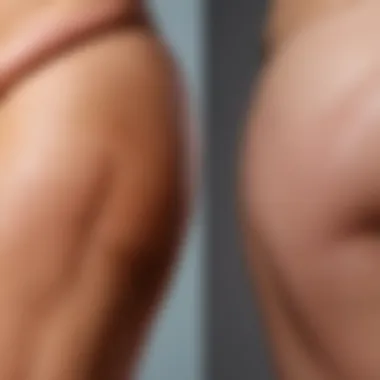
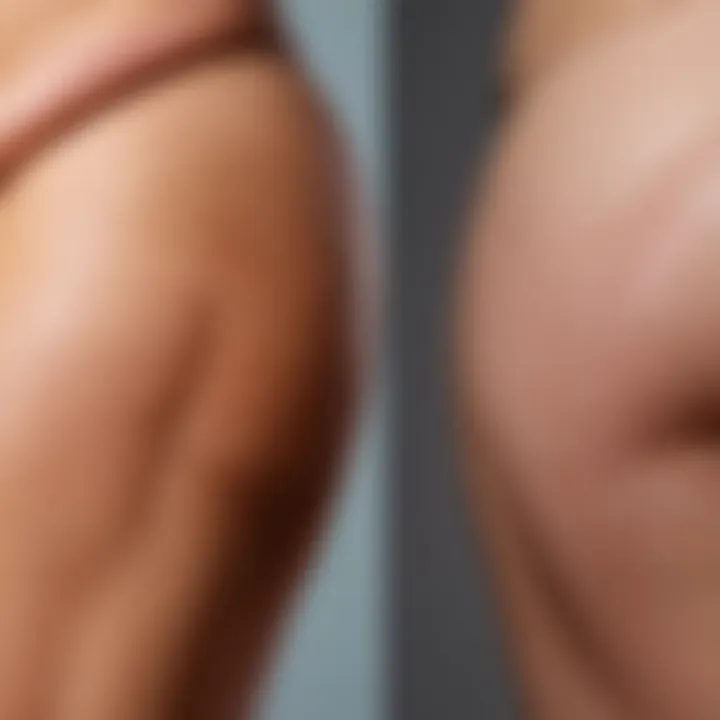
In summary, the appearance and characteristics of red striae encompass essential information that can guide treatment and emotional adjustment. From color to texture and size to similar skin conditions, a thorough understanding can empower individuals to embrace their skin and take informed steps toward prevention and remediation of red striae.
Psychological Impact of Striae
Red striae can have a significant emotional toll on individuals. Often, these skin marks become more than just a cosmetic concern; they strike at the core of self-image and personal confidence. Individuals alike may feel discomfort or embarrassment about their appearance, leading to self-esteem issues that can eclipse their otherwise vibrant personalities. In this section, we delve into the psychological aspects tied to the presence of red striae, exploring how these physical manifestations can affect people's lives beyond the surface.
Self-esteem Issues
One of the most pressing impacts of red striae is its effect on self-esteem. When skin displays visible imperfections, it often leads to feelings of insecurity. Many find themselves uncomfortably aware of their bodies, feeling that they can’t wear certain clothing or participate in activities, like swimming or yoga, that expose their legs. This unease might lead to avoidance behaviors, causing social withdrawal or reluctance to engage fully in life’s moments.
Consider the following:
- Body Image: For some, red striae alter their perception of what constitutes an attractive body. This perception can lead to negative self-talk and self-critical thoughts that linger in the mind. Individuals might compare themselves to idealized standards presented in media, making their own bodies feel insufficient.
- Social Interactions: Feeling self-conscious can taint social interactions, as individuals may focus more on hiding their striae than on engaging with friends and family. This can lead to a cycle of isolation, where one’s emotional well-being deteriorates alongside their physical self-image.
- Mental Health: Persistent thoughts about appearance might contribute to mental health issues like anxiety and depression. As self-worth gets tied to physical attributes, it becomes crucial to address these psychological impacts.
Awareness and Perception
The awareness of red striae often shapes how individuals perceive themselves and their interactions with others. This perception can be a double-edged sword. On one end, individuals become more acutely aware of their own bodies, which can motivate changes in lifestyle or encourage skin care regimens. On the other hand, this heightened awareness can lead to a fierce scrutiny of perceived flaws.
Key considerations include:
- Reality vs. Perception: Many people view their striae as marks of imperfection, not realizing that a significant portion of the population shares similar experiences. Understanding that these skin changes are common can help shift the perception from seeing them as flaws to viewing them as normal life events.
- Cultural Influence: Different cultures have varied responses to body image and skin conditions. Where one community may embrace these markers as badges of survival or motherhood, another may push the narrative of flawless skin. Such cultural impacts can deepen the psychological effects, either fostering acceptance or intensifying stigma.
Overall, addressing the psychological impacts of red striae is just as vital as medical treatments. By fostering awareness, encouraging conversations, and providing supportive environments, we can help individuals navigate the complexities of their self-image effectively.
"Your body is not a battleground; it's a canvas reflecting your life story."
By recognizing these psychological aspects, individuals can gain empowerment over their own narratives, challenging the unrelenting standards of beauty that often confine us.
Prevention Strategies
Understanding prevention strategies is like having a roadmap on your journey through life. While red striae may sometimes feel unavoidable, knowing how to fend them off can significantly empower individuals. These measures not only aim to keep skin healthy but also boost overall well-being. So, let’s break down a few core strategies to keep those pesky marks at bay.
Maintaining Healthy Weight
One key component in minimizing the appearance of red striae is maintaining a healthy weight. Rapid fluctuations in weight stretch the skin, making it more susceptible to developing stretch marks. To achieve a stable weight, here are a few tips:
- Balanced Diet: Incorporate plenty of fruits, vegetables, and whole grains into your meals. Opt for lean proteins and healthy fats to keep nutrition on point.
- Regular Exercise: Engaging in consistent physical activity not only aids in weight maintenance but also enhances skin elasticity. Whether it's a brisk walk or yoga, moving your body can make a difference.
- Weight Management Programs: If you find it tough to maintain your weight solo, consider joining a support group or signing up for a structured program that helps you reach your goals responsibly.
Hydration and Nutrition
Staying hydrated and nurturing the body from within are powerful allies in the fight against red striae. Proper hydration helps maintain skin suppleness, while good nutrition nourishes the skin:
- Water Intake: Aim to drink at least eight 8-ounce glasses of water a day. Hydration keeps the skin plump and may minimize the appearance of scratches and scarring.
- Vitamins and Minerals: Focus on vitamins A, C, D, E, zinc, and silica. These nutrients support skin health and can enhance its elasticity, potentially preventing stretch marks. Try including foods like carrots for vitamin A, citrus fruits for vitamin C, and nuts for vitamin E in your diet.
- Healthy Fats: Don’t shy away from healthy fats found in avocados, olive oil, and fatty fish. They contribute to a balanced diet and can also help ease the look of stretched skin.
Skin Care Routines
To keep your skin in its prime, consider establishing a regular skincare routine. This practice can strengthen skin resilience and reduce the risk of striae:
- Moisturization: Apply thick creams, oils, or lotions regularly. Look for products containing hyaluronic acid, cocoa butter, or vitamin E as they are known to enhance skin hydration.
- Massage: Incorporate gentle skin massages into your routine when applying oils or lotions. This technique can stimulate blood circulation, promoting healthier skin.
- Exfoliation: Regular exfoliation can help remove dead skin cells and encourage skin regeneration. Use natural exfoliators like oatmeal or sugar, keeping it gentle to avoid irritation.
"Remember, it’s always easier to prevent than to cure. Taking proactive steps now can save you a lot of trouble later.”
While red striae might seem like an inevitable part of life, implementing these prevention strategies can greatly reduce their appearance and impact. Taking control of your skin health today can create a positive ripple effect on your overall well-being.
Treatment Options
Addressing red striae on the back of the legs is not just about addressing aesthetic concerns but also involves understanding the various treatment options available. These striae, often seen as unsightly or distressing, can serve as reminders of past bodily changes. However, numerous avenues exist to mitigate their appearance and improve skin health. Effective treatment can lead to enhanced self-confidence and a more favorable body image, making it an important aspect of caring for one’s skin.
Topical Treatments
Topical treatments are often the first line of defense against red striae. Creams and gels containing ingredients like hydroxy acids and retinoids can help to promote cell turnover and increase collagen production. Over-the-counter options often include formulations with shea butter or cocoa butter, which may improve skin elasticity.
- Key ingredients:
- Hyaluronic Acid: Maintains skin moisture.
- Centella Asiatica: Aids collagen synthesis.
- Vitamin E: Protects and heals skin.
While these treatments can offer gradual improvement, results often take time and consistency to show. They are best used as part of a comprehensive skincare routine.

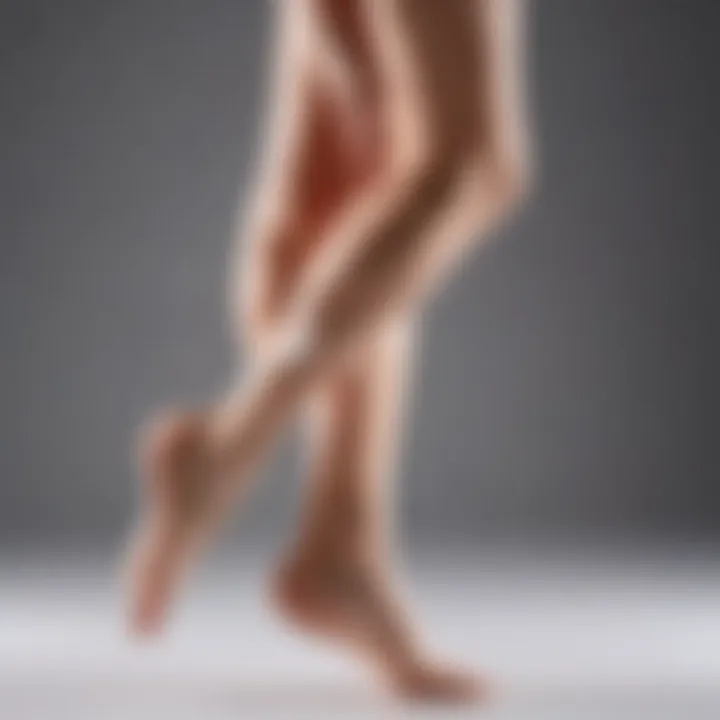
Laser Therapy
Laser therapy has gained traction in the treatment of red striae, bringing significant advancements in dermatology. This method utilizes focused light to target and break down scar tissue, encouraging the formation of new skin layers. The procedure helps to fade the color of striae and improve the overall texture of the skin.
- Benefits:
- Faster results compared to topical treatments.
- Minimal recovery time.
- Reduced skin texture irregularities.
However, keep in mind that laser therapy is often a more costly option and may require multiple sessions, depending on the severity of the striae. Consulting a dermatologist can help determine if this treatment is suitable for your specific case.
Microdermabrasion
Microdermabrasion is a minimally invasive procedure that exfoliates the top layer of the skin using tiny crystals. This treatment helps to improve skin texture and can be effective in reducing the visibility of striae. It promotes new skin cell growth, contributing to the overall rejuvenation of the skin.
- Considerations:
- It is non-surgical and generally safe for most skin types.
- Some redness or sensitivity may occur post-treatment.
Like laser therapy, multiple sessions may be needed to achieve desired results. Regular maintenance treatments can help to sustain improvement over time.
Role of Professional Consultation
Seeking the advice of a professional dermatologist is an essential step when considering treatment for red striae. A healthcare expert can provide tailored advice and treatment options suited to individual skin types and concerns.
- Benefits of consultation:
- Personalized treatment plans.
- Access to advanced treatment options not available over-the-counter.
- Professional assessment of skin condition and underlying causes.
Engaging with a specialist ensures that the treatments chosen will be effective and safe, reducing the risk of wasted resources on ineffective solutions.
Treatment for red striae should always be approached with caution and informed decisions.
Lifestyle Considerations
Understanding the importance of lifestyle factors can be crucial when dealing with red striae, or stretch marks, particularly on the backs of the legs. These markings are not merely cosmetic concerns; they hold relevance in broader health and personal well-being. By examining the ways lifestyle choices can affect the development and visibility of red striae, a more proactive approach can be undertaken toward prevention and treatment.
Physical Activity Recommendations
Physical activity plays a dual role in the context of red striae. On one hand, engaging in consistent exercise helps maintain a healthy weight, which is important, as rapid weight gain or loss can contribute significantly to the formation of striae. On the other hand, certain exercises can promote skin elasticity and overall skin health.
- Recommended Exercises: Incorporating both aerobic and strength training exercises can bolster the skin's resilience. Activities like jogging or cycling can help manage weight effectively, while weight training, particularly for the legs, can create muscle definition, potentially reducing the visibility of striae over time.
- Stretching: Regular stretching routines should not be overlooked. Yoga or pilates can enhance flexibility and circulation, which might prove beneficial for skin health.
- Listen to Your Body: It's important to pay attention to how your body responds to different activities. Some individuals might encounter discomfort or strain in certain movements. Adjusting exercise routines to avoid injury is essential for long-term benefits.
Wearing Supportive Garments
Another aspect of lifestyle consideration includes the choice of clothing, especially supportive garments. Wearing the right kind of clothing can play a surprisingly vital role in skin health.
- Compression Garments: These are designed to support blood circulation and can help alleviate pressure on the skin, potentially reducing the appearance of stretch marks. Some people might find that wearing compression leggings or stockings during workouts can be particularly effective.
- Comfort Matters: Selecting fabrics that allow your skin to breathe can also make a difference. Natural fabrics like cotton may provide comfort and reduce irritation, enabling the skin to function optimally.
It's not just about aesthetics—comfortable, supportive clothing can enhance your confidence, making you less likely to shy away from physical activities that may otherwise lead to changes in your body.
"Embracing a mindful approach toward physical activity and clothing choices can serve as a hidden armor against skin issues, empowering you to shine through any skin concerns."
In summary, adopting a thoughtful lifestyle when it comes to physical activity and clothing can greatly influence the visibility of red striae, while enhancing overall well-being. It's about taking proactive steps to care for your skin and nurturing your body to meet its needs.
Epilogue
Discussing the topic of red striae on the back of the legs is pivotal for anyone looking to understand their skin better. Striae, commonly referred to as stretch marks, can affect individuals of all walks of life, regardless of age or body type. The appearance of these marks can be unsettling, but comprehending their origins, appearance, and ways to address them equips individuals to deal with potential concerns more effectively.
Awareness and understanding of the causes range from genetic predisposition to hormonal fluctuations, weight variations, and even physical growth through exercise. Recognizing these triggers provides a sense of control over one’s skin health and can lead to better preventative measures.
In terms of benefits, addressing red striae can improve self-esteem and enhance body image. Being knowledgeable about treatment options, including topical treatments, laser therapy, and skin care routines, empowers people to take proactive actions towards minimizing their appearance.
Furthermore, as we shift towards a future where skin health is prioritized, ongoing research into the genetic and environmental factors that contribute to striae is crucial. This exploration holds promise not only for treatment but also for preventive strategies that can help individuals embrace their skin less controversially.
"The more you know about your skin, the better you can take care of it."
In summary, by understanding red striae, individuals are better informed about their options, fostering a healthier relationship with their skin, ultimately promoting a holistic viewpoint in personal care.
Key Takeaways
- Red striae are more than a cosmetic concern; they symbolize changes in the body and can affect self-image.
- Knowledge of causes helps in preventing or at least mitigating the effects of red striae.
- Multiple treatment options exist, and some may be more effective than others depending on individual situations.
- Enhancing awareness can lead to better mental health outcomes related to body image.
Future Research Directions
- Investigate the genetic factors contributing to the development of red striae, focusing on hereditary patterns that may predispose individuals to this skin condition.
- Explore the impact of different hormones, particularly during puberty and pregnancy, on skin elasticity and the formation of stretch marks.
- Study the effectiveness of various treatment modalities over time, particularly in diverse populations.
- Examine the psychological attributes associated with skin conditions like striae, aiming to understand how they affect a person’s daily life and mental health.







